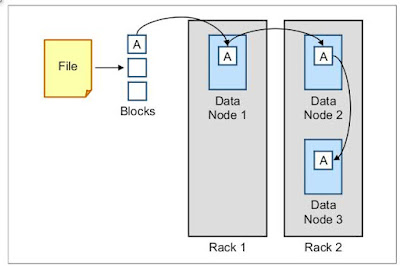How Agentic AI Optimizes Data Cleaning in Big Data Projects
Introduction
In the era of Big Data, organizations collect massive volumes of structured and unstructured data from diverse sources. However, raw data is rarely perfect. It often contains errors, missing values, duplicates, or inconsistencies that compromise its quality and reliability. Data cleaning, also known as data preprocessing, is therefore a crucial step in any Big Data project. Traditional approaches to data cleaning are often manual, rule-based, and time-consuming.
With the advent of Agentic AI, a new paradigm is emerging—one that automates, adapts, and optimizes data cleaning at scale.
What is Agentic AI?
Agentic AI refers to artificial intelligence systems that operate with goal-driven autonomy, capable of perceiving their environment, reasoning about tasks, and taking actions without continuous human oversight. Unlike static machine learning models, Agentic AI agents can dynamically adapt to new conditions, negotiate trade-offs, and optimize workflows in real time. In the context of data cleaning, this makes them particularly powerful because data quality issues are rarely uniform or predictable.
The Challenges of Data Cleaning in Big Data
Before diving into Agentic AI’s role, it is essential to understand the challenges of cleaning large-scale data:
-
Volume – Petabytes of information require scalable cleaning solutions.
-
Variety – Data arrives in different formats: structured (databases), semi-structured (JSON, XML), and unstructured (text, audio, video).
-
Velocity – Real-time data streams demand on-the-fly cleaning.
-
Veracity – Data may include noise, inconsistencies, and uncertainty.
-
Complexity – Multiple pipelines and sources create difficulties in ensuring uniform quality.
Traditional ETL (Extract, Transform, Load) methods often struggle with these factors, leading to bottlenecks in analytics and machine learning pipelines.
How Agentic AI Optimizes Data Cleaning
-
Automated Anomaly Detection
Agentic AI leverages unsupervised learning and self-adaptive algorithms to detect anomalies, outliers, and irregularities in data. Instead of relying on predefined thresholds, agents learn patterns from the data itself, flagging inconsistencies in real time. -
Context-Aware Imputation
Missing data is a common issue. Agentic AI can impute missing values by understanding the context of the dataset. For example, instead of filling missing entries with averages, it uses relational data and domain-specific reasoning to make intelligent predictions. -
Deduplication and Record Matching
Duplicate records can distort analytics. Agentic AI agents apply natural language processing (NLP), entity resolution techniques, and adaptive similarity measures to match records across sources, even when identifiers differ (e.g., “NYC” vs. “New York City”). -
Dynamic Schema Alignment
Big Data often comes from disparate systems with incompatible schemas. Agentic AI automatically aligns and integrates heterogeneous datasets by learning semantic relationships between fields, reducing manual mapping efforts. -
Bias and Noise Reduction
Data may carry inherent biases or irrelevant noise. Agentic AI identifies skewed distributions, rebalances datasets, and filters irrelevant information to ensure higher fairness and accuracy in downstream analytics. -
Real-Time Data Stream Cleaning
For IoT and streaming platforms, Agentic AI continuously monitors incoming data, applying transformations and corrections on the fly. This ensures that only clean, reliable data enters storage or analytics layers. -
Human-in-the-Loop Collaboration
While largely autonomous, Agentic AI can involve humans when uncertainty is high. For example, if an ambiguous record cannot be classified, the system seeks expert input, learns from the decision, and applies it in future scenarios.
Benefits of Using Agentic AI in Data Cleaning
-
Scalability: Handles petabytes of data efficiently.
-
Accuracy: Improves reliability of analytics and ML models.
-
Adaptability: Learns and evolves with changing data streams.
-
Efficiency: Reduces manual cleaning time, accelerating projects.
-
Cost Reduction: Minimizes labor and infrastructure costs.
-
Enhanced Decision-Making: Ensures insights are based on clean, consistent, and trustworthy data.
Case Example
Consider a financial services company processing millions of real-time transactions. Traditional rule-based cleaning might fail to flag subtle anomalies, like fraudulent transactions disguised as normal purchases. With Agentic AI, the system continuously learns spending behaviors, detects inconsistencies, cleans transactional logs, and prevents fraud—all while ensuring high-quality data feeds into risk management models.
Future Outlook
As data volumes grow and become more diverse, Agentic AI will evolve into the backbone of automated data management systems. Integration with cloud-native platforms, edge computing, and federated learning will further enhance its ability to clean distributed datasets in real time. Organizations that adopt Agentic AI in data cleaning will gain a competitive advantage by ensuring that their analytics and AI pipelines rest on a foundation of reliable data.
Conclusion
Data cleaning is no longer just a preparatory step—it is the foundation of successful Big Data projects. Agentic AI optimizes this process by automating detection, correction, and integration tasks while adapting dynamically to new challenges. By leveraging these intelligent agents, organizations can accelerate innovation, reduce costs, and improve the quality of their insights, ensuring that their data-driven strategies are both accurate and impactful.





Comments
Post a Comment